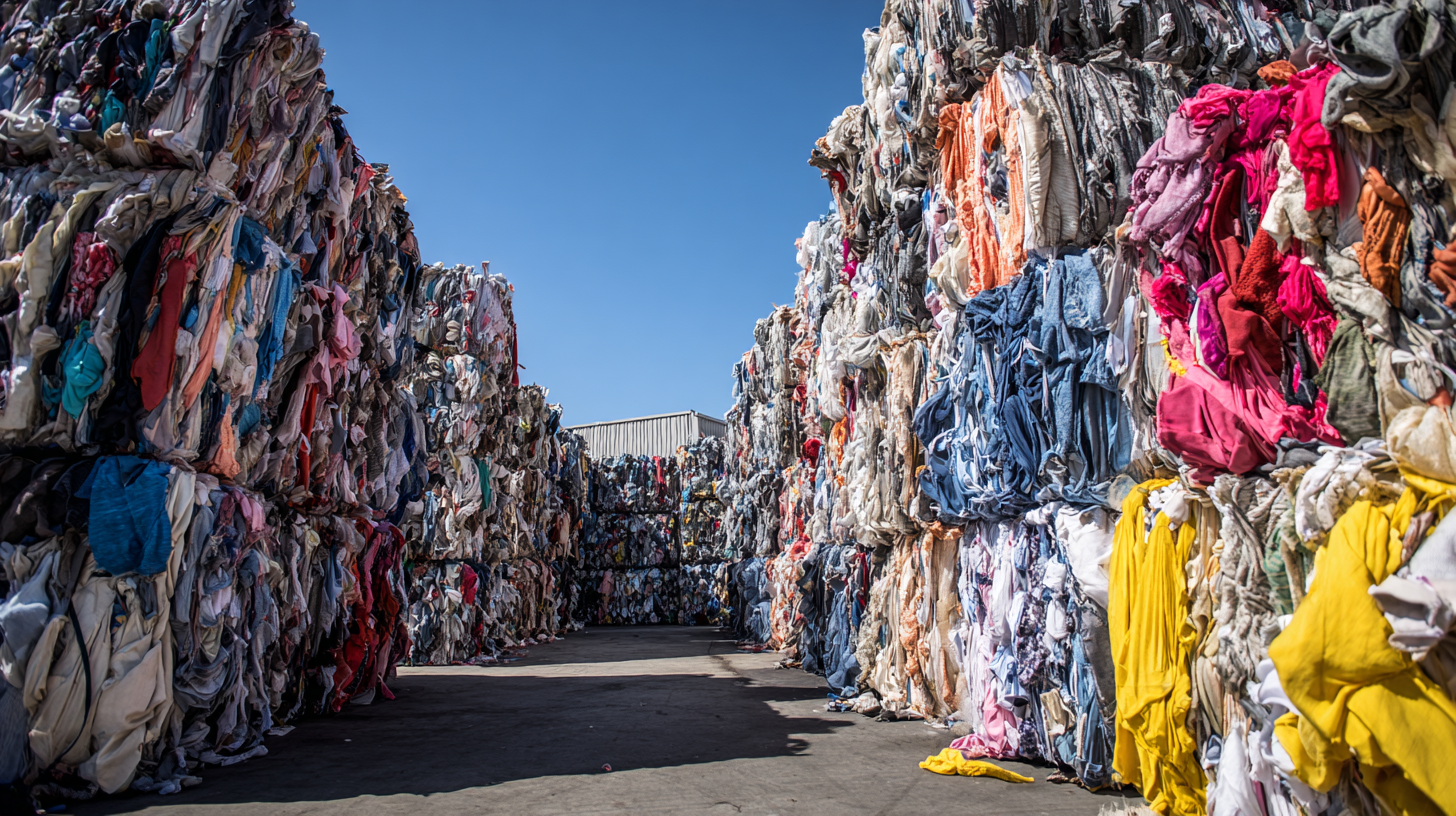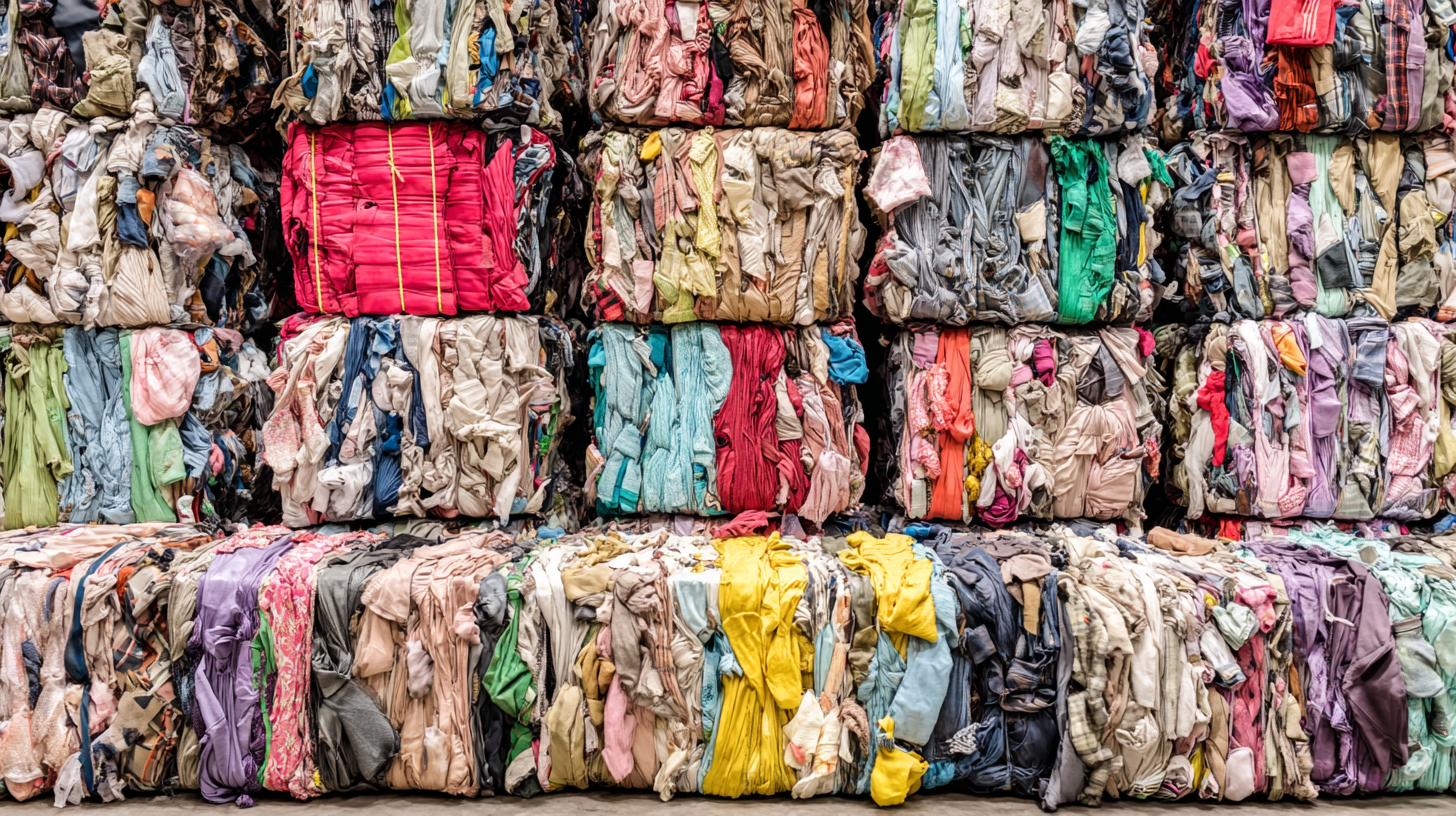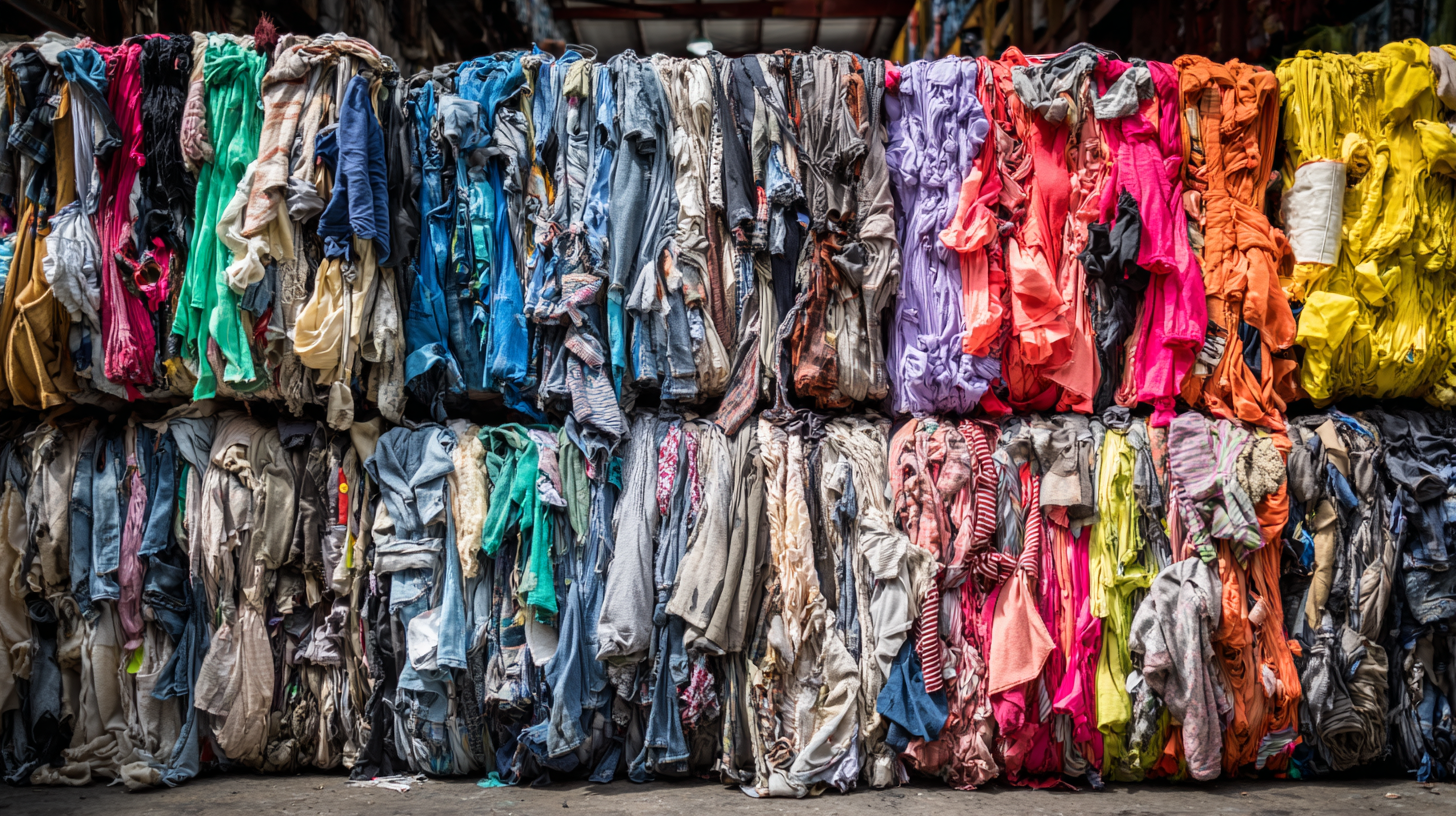Leave Your Message
As the fashion industry continues to grapple with issues of sustainability and ethical sourcing, the trend of utilizing Mixed Vintage Used Clothes Bales is gaining remarkable traction. According to the Global Textile Recycling Market report, the recycled textiles market is projected to reach USD 1.66 billion by 2025, emphasizing the increasing consumer demand for sustainable fashion alternatives. In 2023 alone, the second-hand clothing market was valued at approximately USD 36 billion, and it is anticipated to grow significantly as more consumers shift towards vintage and upcycled apparel. By embracing Mixed Vintage Used Clothes Bales, brands are not only reducing waste but also tapping into a diverse range of unique styles, thereby redefining fashion supply chains globally. This transformation signifies a pivotal movement towards a circular economy in fashion, underscoring the environmental and economic benefits of recycled fashion.

The fashion industry is witnessing a transformative shift with the rise of mixed vintage used clothes bales in global supply chains. As consumers increasingly demand sustainable options, these bales offer an eco-friendly alternative to fast fashion. According to a report by Statista, the global second-hand apparel market is expected to reach $64 billion by 2024, reflecting a growing appetite for pre-loved items. This surge in popularity not only promotes sustainable practices but also emphasizes the uniqueness of vintage clothing, allowing brands to cater to a more environmentally conscious clientele.
Incorporating mixed vintage bales into the supply chain allows retailers to access a diverse array of styles and sizes, which can enhance their product offerings. The resale textiles market is projected to grow at a compound annual growth rate (CAGR) of 24% from 2022 to 2030, underscoring the lucrative potential for businesses that embrace this model. Retailers can find new opportunities to connect with customers who value individuality and sustainability.
Tip: When sourcing mixed vintage used clothes, consider selecting suppliers who prioritize transparency and ethical practices to build consumer trust.
Tip: Engaging storytelling around the unique history of vintage pieces can significantly enhance their appeal in marketing campaigns, connecting emotionally with consumers.
Chinese manufacturers are increasingly setting the standard for quality and trust in the global fashion supply chain, particularly in the mixed vintage used clothes market. Recent reports indicate that China's innovation capabilities have surged, with a 44% increase in R&D spending over the past five years, positioning the country as a leader in advanced industries. This transformation is vital for the vintage clothing sector, where quality assurance and sustainability are paramount. For instance, a survey found that 64% of consumers are willing to pay a premium for eco-labeled products, emphasizing the importance of perceived quality in driving purchasing decisions.
The focus on quality is coupled with a growing emphasis on sustainability. In 2023, new renewable energy capacity in China accounted for 63% of the global total, reflecting the country’s commitment to sustainable development. As mixed vintage clothing bales gain popularity for their eco-friendliness, Chinese manufacturers are leveraging these advancements, ensuring that their products not only meet international standards but also align with the increasing consumer demand for responsible sourcing. This strategy not only fosters trust among global buyers but also positions China as an essential player in promoting a more sustainable fashion industry.
This chart illustrates the impact level of various factors concerning mixed vintage used clothes bales on the global fashion supply chain. The factors considered include sustainability, cost reduction, quality assurance, market demand, and cultural diversity, each with an effect rating from 1 to 10.
The resurgence of vintage clothing has become a cornerstone for sustainable fashion practices. Research indicates that the fashion industry is responsible for approximately 10% of global carbon emissions, a staggering figure that highlights the need for a shift towards more ethical production methods. By embracing mixed vintage clothes bales, brands not only reduce waste but also diminish the environmental impact of producing new garments. According to the Ellen MacArthur Foundation, extending the life of fashion items by just nine months can reduce carbon, water, and waste footprints by 20-30%.
Moreover, the ethical appeal of vintage clothing resale is gaining traction among consumers, particularly younger generations. A report by ThredUp states that the secondhand market is expected to reach $64 billion by 2024, driven by a conscious consumer base that prioritizes sustainability. This movement supports local economies, as many vintage sellers are small businesses or individuals, fostering community engagement while promoting responsible consumption. The shift in consumer behavior underscores a growing commitment to environmental responsibility, proving that vintage fashion is not just a trend but a vital component of a regenerative fashion ecosystem.
| Reason | Description | Impact on Supply Chain |
|---|---|---|
| Sustainability | Vintage clothing reduces waste and lessens the demand for new textile production. | Promotes a circular economy. |
| Affordable Fashion | Provides access to unique styles at lower prices compared to new items. | Increases diversity in consumer choices. |
| Unique Styles | Vintage clothing offers one-of-a-kind pieces that stand out from mainstream trends. | Encourages individual expression and creativity in fashion. |
| Cultural Heritage | Vintage pieces often reflect historical fashion and carry cultural stories. | Preserves fashion history and promotes cultural awareness. |
| Reduced Carbon Footprint | Reselling used clothes lowers the environmental impact associated with new production. | Contributes to greater environmental sustainability across fashion supply chains. |
| Quality Over Quantity | Vintage clothing is often made with higher quality materials compared to fast fashion. | Shifts focus from mass production to quality, thereby altering industry standards. |
| Ethical Consumption | Encourages consumers to buy ethically and support sustainable practices. | Promotes an ethical mindset in fashion purchasing choices. |
As the global fashion industry faces increasing scrutiny over its environmental impact, the adoption of mixed vintage used clothes bales represents a vital step towards embracing a circular economy. According to the Global Fashion Agenda, the fashion industry accounts for 10% of annual global carbon emissions, making it imperative to find sustainable solutions. Repurposing vintage clothing not only diverts waste from landfills but also significantly reduces the demand for new textiles, which are resource-intensive to produce. The resale market is projected to reach $64 billion by 2024, underscoring a growing consumer preference for sustainable fashion options, thereby fostering a more circular approach to clothing consumption.

Moreover, the benefits of mixed vintage clothing extend beyond environmental impact to social and economic dimensions. A report by ThredUp revealed that the resale market could save over 26 billion pounds of clothing from landfills by 2028. This shift not only alleviates the overwhelming textile waste challenge but also creates new business opportunities within the fashion supply chain. By purchasing vintage clothes bales, businesses can tap into unique styles while promoting sustainability, catering to a consumer base increasingly conscious of the ecological footprint of their purchases. In this evolving landscape, the circular economy is redefining fashion, turning what was once considered waste into valuable resources.
The vintage fashion trend is increasingly shaping consumer choices, especially in the thriving second-hand clothing market. With the global second-hand apparel resale market projected to grow from $16.25 billion in 2024 to $31.69 billion by 2032, an 8.7% annual growth rate reflects a shift in shopping habits. Consumers are no longer just seeking affordability; they are drawn to the unique stories and sustainability that vintage pieces offer. This shift highlights an evolving cultural mindset, where fashion choices are infused with personal expression and environmental consciousness.

Moreover, as luxury brands adapt to this changing landscape, they are increasingly adopting marketing strategies that resonate with younger, eco-conscious consumers. The rise of "quiet luxury" reflects a demand for understated elegance rather than flashy displays of wealth. As consumers embrace the idea of owning pre-loved luxury items, brands must rethink their approaches to emphasize authenticity and sustainability. This changing dynamic in global fashion supply chains underscores the necessity for brands to stay attuned to emerging consumer values, paving the way for innovative marketing that aligns with the expectations of today’s discerning shoppers.
